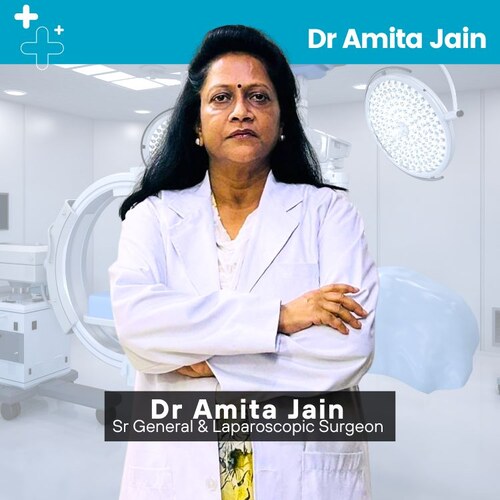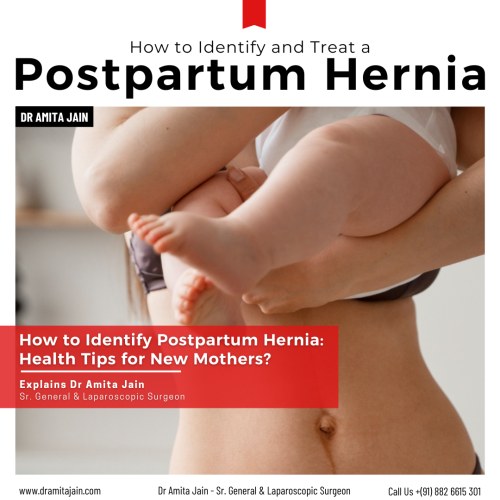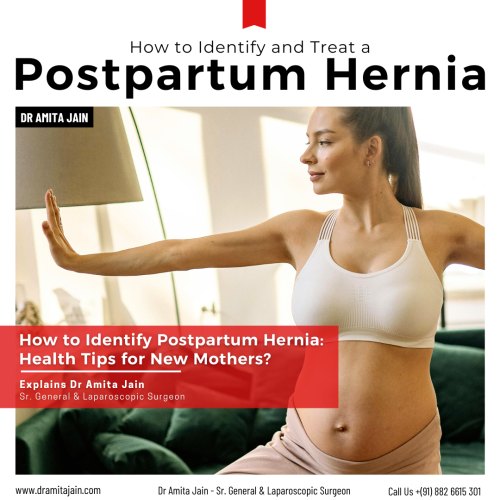Pregnancy and childbirth bring about immense changes in a woman’s body. While most postpartum discomforts gradually resolve with rest and care, some issues can persist or even worsen if not recognized early. One such condition is a postpartum hernia. Understanding how to identify and treat a hernia after childbirth is crucial to prevent complications and maintain long-term health, says Dr Amita Jain, a leading laparoscopic surgeon and a specialist surgeon for hernia treatments in Delhi and India.
What Is a Postpartum Hernia?
A postpartum hernia is a bulge or protrusion that develops when an internal organ or tissue pushes through a weakened area of the abdominal wall after pregnancy. During pregnancy, the abdominal muscles stretch significantly to accommodate the growing baby. This stretching, combined with the pressure exerted during labor, can weaken or create gaps in the abdominal muscles or fascia.
The most common types of postpartum hernias include umbilical hernia (occurring near the belly button), incisional hernia (developing at the site of a cesarean incision), and ventral hernia (involving the front of the abdomen). While hernias are not always dangerous immediately, they can become larger or lead to serious complications if left untreated.
How to Identify a Postpartum Hernia?
Recognizing the signs of a postpartum hernia early makes treatment more straightforward. A noticeable bulge or lump in the abdomen is the most common sign, especially when standing, coughing, or straining. Many women experience a feeling of pressure, discomfort, or heaviness in the abdomen.
There may also be pain around the hernia site, which tends to worsen with activity or lifting. In the case of an incisional hernia, the bulge often appears near the C-section scar. In severe cases, a hernia can become trapped (incarcerated) or cut off from blood supply (strangulated), leading to sudden severe pain, nausea, or vomiting, which requires emergency medical care.
Diagnosis – A postpartum hernia is usually diagnosed through a physical examination. In some situations, your doctor may recommend imaging tests such as an ultrasound or CT scan to determine the size of the hernia and what tissues are involved.
Watchful Waiting – If the hernia is small and not causing pain, your doctor may recommend simply monitoring it over time. While this approach can be appropriate in select cases, it is important to understand that hernias do not heal on their own and can grow larger as time passes.
Lifestyle Modifications – Certain habits can help reduce discomfort and prevent worsening. Avoid heavy lifting whenever possible, and use proper body mechanics when getting up or carrying your baby. Your doctor may also advise wearing an abdominal support binder to help relieve pressure in the area.
Surgery – Surgery is the only way to definitively repair a postpartum hernia. The surgical approach depends on the hernia’s size and location. In an open repair, the surgeon makes an incision over the hernia to close the defect with sutures and often reinforces it with surgical mesh. In a laparoscopic repair, the surgeon uses a minimally invasive technique with smaller incisions, specialized instruments, and a camera to guide the procedure.
Laparoscopic repair often allows faster recovery with less postoperative discomfort. Your doctor will help you decide when surgery is appropriate, balancing the need for repair with your postpartum recovery and caregiving demands.
Recovery and Prevention
After treatment, most women recover well and can return to normal activities within a few weeks. To help prevent future hernias, it is important to gradually rebuild core strength with gentle postpartum exercises recommended by your healthcare provider. Maintaining a healthy weight can also reduce pressure on the abdominal wall. Additionally, avoiding chronic straining, such as severe constipation or heavy lifting without support, helps protect your abdomen over time.
A postpartum hernia can be unsettling, but with prompt diagnosis and the right treatment, most women recover fully. If you suspect a hernia after pregnancy, don’t ignore it—early medical advice will help you protect your health and well-being as you care for your new baby.

Dr Amita Jain is one of India’s most distinguished and experienced female surgeons, known for her unmatched expertise in general and laparoscopic surgery. With over 29 years of surgical excellence, Dr Amita Jain has built a reputation for precision, compassionate care, and advanced surgical techniques.
Dr Amita Jain has successfully performed a wide range of complex general surgeries, including both open and minimally invasive procedures, with a strong focus on trauma care, onco-surgical techniques, and reconstructive surgeries. Her areas of specialisation include (including Gallbladder stone removal, appendix removal, hernia repair surgery, piles and fissure surgeries). She was the Professor of Surgery at the Army College of Medical Sciences and Base Hospital, Delhi Cantt. In 1994, she was commissioned asa Surgeon under the United Nations Mission in Congo. From 2020 to 2022, she worked with Bansals Hospital. Currently, Dr Amita Jain is the Senior General and Laparoscopic Surgeon at Rainbow Children Hospitals (Malviya Nagar, Delhi), Artemis Lite: Multi-Speciality Care Hospital (New Friends Colony, New Delhi) and at Rosewalk – Luxury Maternity Hospital in Delhi (Panchsheel Park, Delhi)
Call Us at +(91) 882-6615301

